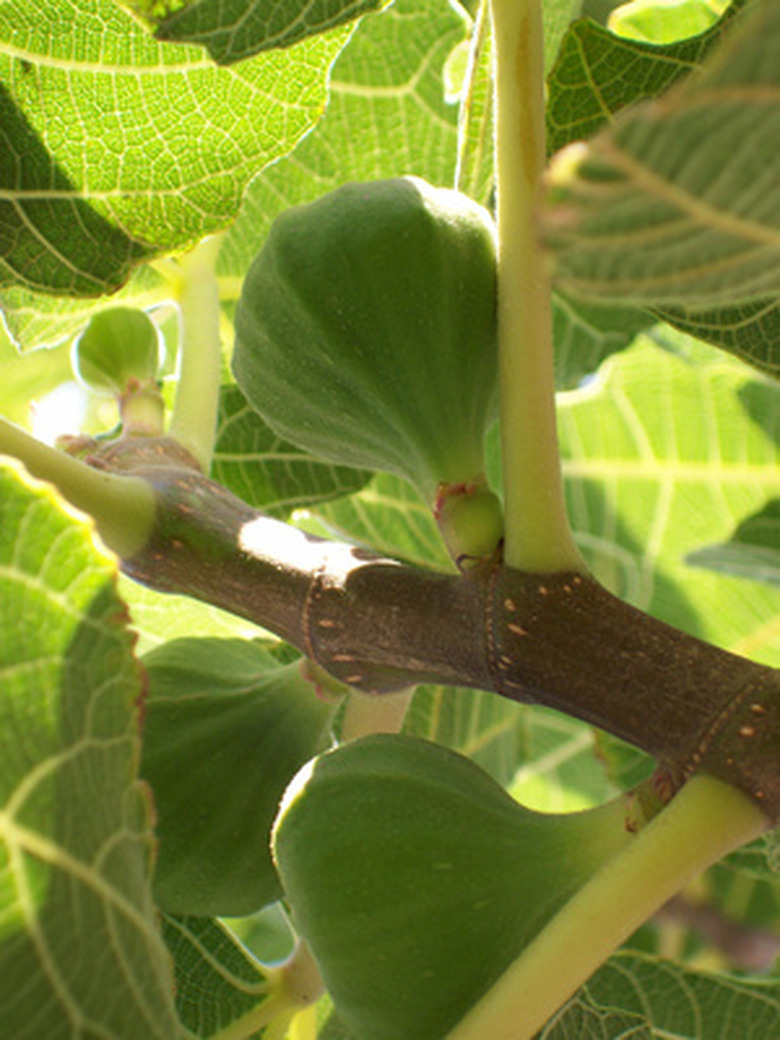How To Plant Fig Trees In Boise, Idaho
Things Needed
- Measuring tape
- Marking chalk
- Fig tree bare root
- Shovel
- Compost
- Newspaper
- Rope
- Plastic wrap
- Fertilizer
Fig trees (Ficus carica) are Mediterranean shrubs that grow to be between 15 and 30 feet high. Fig trees thrive in hardiness zones 8 through 10 but can survive through zone 5 with winter protection. Idaho is a large state with hardiness zones ranging from 4 in the north to 7 in the south. Due to its cold conditions, fig trees must have proper summer and winter care for successful growth. Thankfully, even a fig tree that completely freezes in winter will most likely sprout again and grow quickly enough for fruit production within one season.
Step 1
Determine the best location for planting. Fig trees thrive in full sun and require well-draining soil. A fig tree should receive at least 8 hours of unfiltered sunlight daily for optimum growth.your step2 should be step1.
- Fig trees (Ficus carica) are Mediterranean shrubs that grow to be between 15 and 30 feet high.
- Due to its cold conditions, fig trees must have proper summer and winter care for successful growth.
Step 2
Measure a distance of 10 feet from any structures, roads and electrical lines to ensure the tree will have ample room for growth. Mark a line at each point using marking chalk.
Step 3
Dig a hole for the bare root. The best time to plant a bare-root fig tree is in March, after the ground is thawed. Dig a hole that is twice the width of the bare root's ball and 3 inches deeper.
Step 4
Remove any packaging from the fig tree's bare root and gently place it in the hole.
Step 5
Fill in the hole with half compost and half soil. Leave 3 inches at the surface for a tree well.
- Measure a distance of 10 feet from any structures, roads and electrical lines to ensure the tree will have ample room for growth.
- Dig a hole that is twice the width of the bare root's ball and 3 inches deeper.
Step 6
Water the tree daily until its roots are established. This usually happens after two weeks. At that point, reduce the watering to twice each week using a deep watering method. Deep watering is accomplished by filling up the tree's well and letting it drain into the soil twice. This method will encourage the roots to grow deep into the soil, protecting them from harsh winter temperatures.
Step 7
Prepare the tree for winter in November, when the evening temperatures begin dropping close to 20 degrees Fahrenheit. Wrap the tree's limbs and trunk in layers of newspaper and tie the newspaper to the limbs and trunk with rope. Cover the newspaper with plastic wrap to keep it waterproof. Do not let the plastic touch the tree's branches, as it will not let the tree breath.
- Water the tree daily until its roots are established.
- At that point, reduce the watering to twice each week using a deep watering method.
Step 8
Remove the winter protection in March and fertilize the tree.
